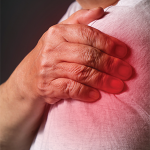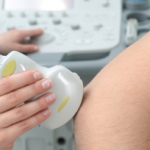Her approach to low back pain began to change in 1991, when she saw a study that found that 60% of patients seen at a United Kingdom outpatient rheumatology clinic for low back pain had tenderness on palpation at the medial end of the iliac crest. She doubted that result, but then she tested it herself on her own patients.
“Sixty percent of the patients I’m seeing had pain at the medial end of the iliac crest,” she said. And they all had temporary resolution of their pain with an injection of lidocaine.
What we need is a paradigm shift.
Far more cases than recognized, she said, are on the mechanical enthesitis spectrum. Three common causes of low back pain include iliolumbar ligament enthesopathy, sacrotuberous ligament enthesopathy involving the two major ligaments controlling the sacroiliac joint, and paraspinous process enthesopathy involving the fascial attachments of the multifidus and the thoracodorsal fascia, she said.
The problem has to do with tensegrity, an engineering concept that features prominently in bridge design and involves the tension of cables and the compressed bars and struts that fit over them. The spine, supported by a network of tendons and muscles, has a similar structure, with ligament, fascia and tendon attachment sites—that is, sites of tension and compression.
“And that’s where you get a problem,” Dr. Gillies said.
Patients with this kind of problem can’t sit or stand still, can suffer morning stiffness lasting up to an hour and are helped by walking. The main treatment: strengthening the core, she said.
She hopes clinicians get out of the habit of resorting to the phrase, “nonspecific low back pain.”
“My opinion is that nonspecific low back pain is not a useful diagnosis,” Dr. Gillies said. “What we need is a paradigm shift.”
Thomas R. Collins is a freelance writer living in South Florida.
Reference
- Bjornsson Hallgren HC, Adolfsson LE, Johansson K, et al. Specific exercises for subacromial pain. Acta Orthop. 2017 Dec;88(6):600–605.

